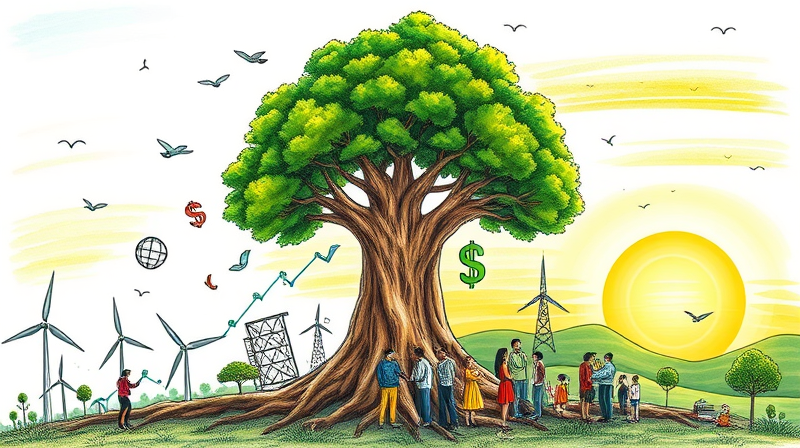
Many investors face the dilemma of choosing between immediate income or future growth. Historically, the narrative was simple: income stocks paid dividends but grew slowly, while growth stocks reinvested profits for rapid expansion. Yet a compelling category has emerged—companies that deliver regular payments to shareholders and sustained expansion, offering the best of both worlds.
Dividends represent a share of profits distributed to shareholders, typically measured by Dividend Per Share (DPS) or Dividend Yield (the dividend as a percentage of the share price). Growth stocks, by contrast, reinvest earnings for research, development, and market share gains, trading off immediate payouts for potential capital appreciation over time.
A hybrid category, known as dividend growth stocks, targets a balance between rewarding shareholders today and fueling growth tomorrow. These companies allocate cash with precision, maintaining a strong capital structure and prioritizing consistent dividend growth over decades.
Conventional wisdom argued that investors must choose between high yields or aggressive growth. High-yield stocks often reside in mature sectors—utilities, tobacco, or consumer staples—that prioritize stable cash flow generation over expansion, offering predictable income streams but limited upside.
Conversely, fast-growing technology and emerging-market firms channel profits into scaling operations, research, and acquisitions, providing little to no dividends but promising larger returns through share price appreciation. This binary choice led many portfolios to forgo one objective in favor of the other.
Dividend growth stocks have demonstrated that reliable income and capital gains need not be mutually exclusive. By pursuing sustainable payout ratios—typically between 40% and 60% of earnings—and reinvesting excess cash into high-return opportunities, these firms maintain strong balance sheets and stable cash flows.
The greatest appeal lies in their ability to increase payouts annually, creating a rising income floor that can help combat inflation while still benefiting from share price appreciation.
Not all high yields signal confidence. A very high yield can indicate depressed share prices, unsustainable payout ratios, or impending dividend cuts. Investors should examine:
- Payout Ratios: The percentage of earnings distributed as dividends; excessively high ratios may erode reinvestment capacity.
- Dividend History: Companies with 25+ years of consecutive increases, often called “dividend aristocrats,” show long-term commitment.
- Leverage and Cash Flow: Low debt levels and robust free cash flow support ongoing increases.
Scrutinizing these metrics helps distinguish between a durable dividend growth story and a precarious yield trap.
Examples of companies delivering both dividends and growth illustrate how disciplined capital allocation can drive dual returns:
Academic studies and market data reveal that dividend growers often outperform non-dividend-paying peers over multi-decade periods. On average, S&P 500 dividend growth stocks have delivered higher total returns with lower standard deviation, particularly outshining during volatile or inflationary markets.
This resilience stems from the dual engines of rising income and share price appreciation, magnified through reinvestment and compounding. Over time, dividends can contribute over 40% of total equity returns.
Dividend growth stocks appeal to various investor types seeking a blend of income and stability:
Tax considerations are paramount; qualified dividends may receive preferential rates, enhancing after-tax returns for eligible investors.
To value dividend growth opportunities, investors often use:
- The Gordon Growth Model (Dividend Discount Model) to estimate intrinsic value based on expected future payments and required return.
- Dividend yield and payout ratio screens to filter for companies with sustainable policies and a history of increases.
- Peer benchmarking against sector averages to assess relative valuation and growth prospects.
Combining these tools offers a comprehensive view of value, risk, and upside potential.
Constructing a dividend growth portfolio involves diversification across sectors with distinct economic drivers—healthcare, technology, consumer staples, and industrials. A prudent approach may include core positions in dividend aristocrats, complemented by select high-yield names sized conservatively.
Investors can also access dividend growth through mutual funds or ETFs—such as a Dividend Aristocrats ETF—which provide diversified exposure to companies with 25+ years of increases. However, expense ratios, tracking error, and concentration risks must be weighed to avoid performance drag.
Regular rebalancing, yield monitoring, and reviews of payout ratios help ensure the portfolio remains aligned with long-term objectives.
You need not choose between income and growth. Dividend growth stocks bridge the divide, delivering rising payouts alongside share price appreciation. By focusing on sustainability metrics, historical performance, and disciplined capital allocation, investors can build portfolios offering stability, inflation protection, and compelling total returns.
Whether planning for retirement, seeking reliable cash flows, or aiming for balanced growth, dividend growth strategies prove you can indeed have both in one stock.
References













